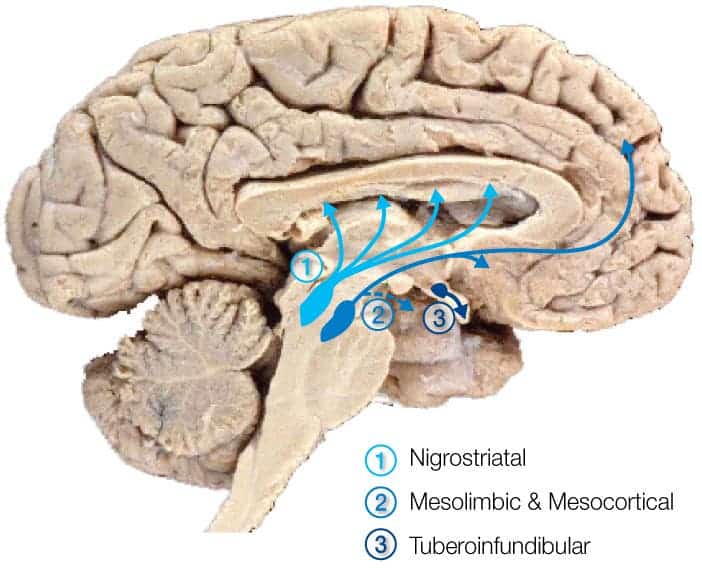University of Florida researchers have discovered how our bodies control dopamine transport in and out of brain cells. Their findings could be the starting point in developing more efficient treatments for drug addictions and several neurological disorders.
Dopamine is the ultimate feel-good substance. Known as the “pleasure molecule,” this amine underlies the brain’s motivation-reward pathway. When doing something you or your body thinks is important such as eating, having sex or getting a new high-score, dopamine gets released to motivate you to keep doing that activity. Basically, it’s the neurotransmitter equivalent of a high five.
But dopamine also acts as a neurotransmitter (chemicals that travel between neurons and relay infromation) in eight other brain structures, including the tongue-torturing nigrostriatal and tuberoinfundibular pathways.
We’ll just call them the dopamine pathways. These structures have an important role to play in our brains and tampering with dopamine levels wreaks havoc on them. Too little can lead to Parkinson’s disease, a brain disorder that causes shaking and problems with movement and coordination. Abnormally high concentrations are linked to schizophrenia and other psychiatric disorders.
Knowing how a particular protein called dopamine transporter controls dopamine movement in and out of neurons is crucial to further understanding of these disorders, said Pharm D., Ph.D. Habibeh Khoshbouei, associate professor of neuroscience in the UF College of Medicine and co-author to the paper.
“It’s an important first step. If we know how the dopamine transport system works, then we can start fixing it when it’s broken or malfunctioning.”
The researchers used mouse and human-derived dopamine neurons to understand how dopamine travels through cell membranes. They found that this movement is controlled by changes in the neurons’ electrical properties (specifically, in the electrical potential on their membranes).
“Changes in the membrane potential alone, a universal yet dynamic cellular property, rapidly alter trafficking of DAT (dopamine active transporter proteins) to and from the surface membrane,” the paper’s abstract reads.
“Broadly, these findings suggest that cell-surface DAT levels are sensitive to membrane potential changes, which can rapidly drive DAT internalization from and insertion into the cell membrane, thus having an impact on the capacity for DAT to regulate extracellular dopamine levels.”
Khoshbuoei likenes the dopamine transporter to a powerful, efficient “vacuum cleaner” that maintains the brain’s chemical balance by rapidly absorbing dopamine back into the cells.
When the system works properly, dopamine is swept back into the neurons by the dopamine transporter, allowing the brain to return to a less-stimulated state. Substances such as cocaine or methamphetamine can keep the brain stimulated by preventing neurons from absorbing the excess dopamine.
A properly functioning dopamine system controls cognition, movement, reward and pleasurable feelings. Imbalance in the dopamine transport system leads to neurological and neuropsychiatric diseases. And understanding how the brain regulates its dopamine levels is the first step in helping those suffering from addiction or neurological disorders.










